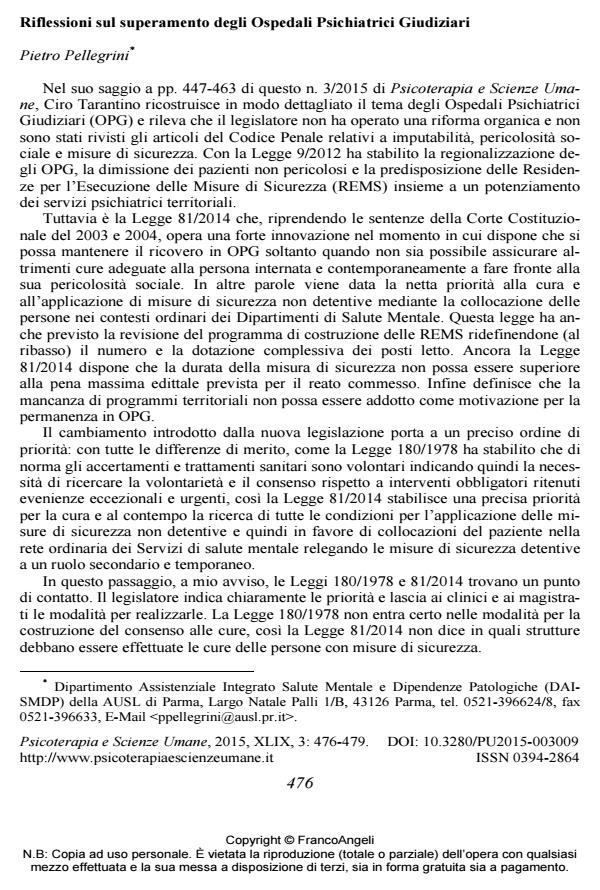Reflections on the closing of Judicial Psychiatric Hospitals in Italy
Journal title PSICOTERAPIA E SCIENZE UMANE
Author/s Pietro Pellegrini
Publishing Year 2015 Issue 2015/3
Language Italian Pages 4 P. 476-479 File size 28 KB
DOI 10.3280/PU2015-003010
DOI is like a bar code for intellectual property: to have more infomation
click here
Below, you can see the article first page
If you want to buy this article in PDF format, you can do it, following the instructions to buy download credits

FrancoAngeli is member of Publishers International Linking Association, Inc (PILA), a not-for-profit association which run the CrossRef service enabling links to and from online scholarly content.
The legislative changes related to the accused acquitted by reason of insanity and socially dangerous are explained. The Italian Law no. 81/2014 gives priority to paths that ensure care and can meet the social danger without custodial measures. The Residences for the Execution of Safety Measures (REMS) are supposed to be a residual choice in the case of measures such detention. The function of REMS is to cure people and at the same time to create the conditions to achieve a measure of security other than imprisonment. In this process, the judiciary system plays fundamental role. The challenge is to combine health and safety and create conditions for the empowerment of people in the logic of the recovery by promoting social inclusion, a chance of hope for community psychiatry.
Keywords: Forensic hospitals, security, eligibility, residences for the execution of security measures (REMS), guilty
- I Servizi di salute mentale all'epoca delle REMS Andrea Angelozzi, in PSICOTERAPIA E SCIENZE UMANE 1/2017 pp.127
DOI: 10.3280/PU2017-001010 - Dibattiti. L'apertura delle REMS psichiatriche: premesse e conseguenze Giancarlo Pizza, in PSICOTERAPIA E SCIENZE UMANE 1/2016 pp.123
DOI: 10.3280/PU2016-001009
Pietro Pellegrini, Riflessioni sul superamento degli Ospedali Psichiatrici Giudiziari in "PSICOTERAPIA E SCIENZE UMANE" 3/2015, pp 476-479, DOI: 10.3280/PU2015-003010